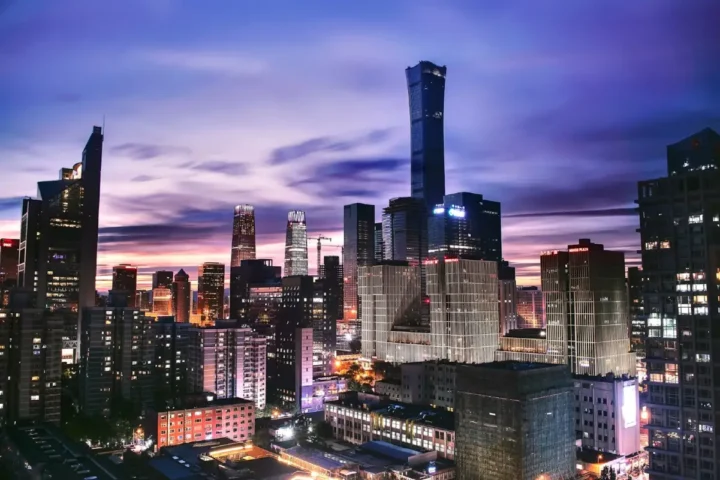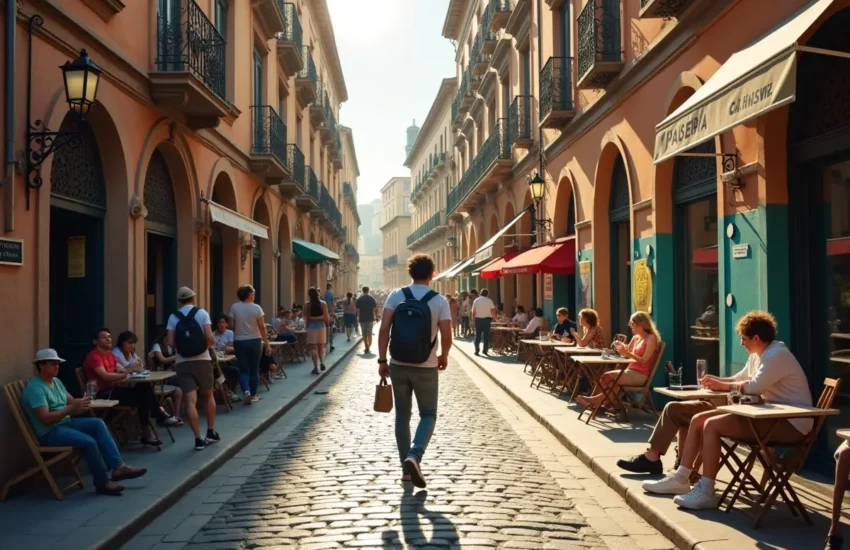Neon Nights and Imperial Echoes: Fast-Paced Discoveries in China and Japan
If you’re seeking a trip that moves between ancient temples and cities bathed in neon light—where sleek skyscrapers rise near tranquil Zen gardens and the clatter of chopsticks mixes with the hum of modern life—China and Japan offer a fusion you won’t forget. In these two titanic cultures, history isn’t behind glass—it’s lived in real time, woven into street food stalls, high-speed trains, and the daily rituals of people who balance tradition with tomorrow.
This is a journey that keeps your senses on high alert, from the thrum of a busy Beijing alley to the silent hush of a Kyoto shrine. So pack light, move fast, and be ready to chase both the ancient and the electric.

Beijing: Where History Towers Over a Changing City
Your adventure might start in Beijing, a city that wears its past proudly yet hurtles forward with modern momentum. Here, emperors once ruled behind the walls of the Forbidden City—an awe-inspiring complex where gold-roofed halls stretch endlessly and marble bridges lead you into the heart of imperial grandeur.
But just beyond those ancient gates, the 21st century roars to life. Beijing pulses with energy—from its high-rise financial hubs to the creative buzz of the 798 Art District, all grounded by a street food scene that nourishes as much as it delights. It’s a city constantly in motion, never caught in the past. You might wake up to tai chi in the park and end your night with craft cocktails on a rooftop bar overlooking the maze of hutongs.
When you’re ready to shift gears, the Beijing to Shanghai train offers a glimpse into China’s obsession with speed and scale. This bullet train slices through the landscape at lightning pace, whisking you from dynastic capital to cosmopolitan hub in around five hours—faster than most people commute to work.
Shanghai: Sky-High Ambitions and Street-Level Surprises
Arriving in Shanghai feels like stepping into the future. Glass-clad towers pierce the horizon, reflecting the light as the Oriental Pearl and a towering neighbour define the city’s futuristic outline. But don’t let all that flash fool you—Shanghai’s soul is grounded in its past.
Wander through the French Concession where plane trees shade elegant boulevards, or explore Yu Garden’s pavilions and koi ponds tucked behind bustling lanes. Grab some xiaolongbao (soup dumplings) so fresh they might just burn your tongue, and sip tea in a century-old teahouse surrounded by skyscrapers.
Shanghai moves fast, but there’s beauty in its contrasts. Historic temples sit tucked beside glossy malls, their presence a soft reminder of a past that still breathes amid the present. Smooth saxophone notes spill from a vintage cocktail bar as a noodle stall fires up just opposite, blending elegance with everyday life. It’s this push and pull between elegance and edge that makes the city addictive.
Kyoto: Slow Beauty in a Fast World
Then it’s time to switch countries—and pace. Japan may be known for its buzzing metropolises, but Kyoto moves differently. Here, time feels like it slows down just enough for you to notice the rustle of bamboo in the breeze, the way incense curls in temple doorways, and the delicate rustle of a kimono as someone passes.
Kyoto is Japan’s spiritual heart, home to over a thousand temples, quiet tea houses, and gardens so precise they look like they were combed by gods. Walk through the vermillion torii gates of Fushimi Inari, listen to monks chant in Nanzen-ji, or simply wander the Philosopher’s Path, where cherry blossoms drift like confetti in spring.
And when the calm has settled deep into your bones and you’re ready to dive back into the city’s pulse, hop on the Kyoto to Tokyo Shinkansen. This sleek bullet train is a marvel of precision and efficiency, turning a nearly 450km journey into a two-hour blur of mountains, suburbs, and rice paddies.
Tokyo: Electric Dreams and Organised Chaos
Tokyo doesn’t introduce itself softly. It throws you into a whirlwind of colour, sound, and motion. One moment you’re getting swept through Shibuya Crossing with thousands of others, and the next you’re slurping ramen in a dimly lit shop tucked under an overpass.
It’s the kind of place where you can buy fresh fish at 5am in Toyosu Market, see a robot show by noon, and be in a tranquil shrine by sunset. Tokyo is contradictions stacked high and running smoothly—vending machines for everything, trains that run to the second, and pockets of silence hidden in one of the loudest cities on earth.
Tokyo isn’t where you slow down—it’s where your senses spark to life. The nightlife pulses in places like Shinjuku and Roppongi, while neighbourhoods like Shimokitazawa and Koenji serve up vintage shops, punk gigs, and the cool side of Tokyo that tourists often miss.
Shared Rhythms: A Tale of Two Cultures
What makes travelling through China and Japan so compelling isn’t just the big-ticket sights—it’s the way both countries reveal themselves in their daily rhythms. In China, it’s grandmothers haggling in open-air markets, steaming baozi on cold mornings, and a thousand conversations happening all at once. In Japan, it’s the silent etiquette of public spaces, the ritual of removing your shoes, and convenience stores that feel more like lifelines than stopgaps.
These are societies with deep reverence for the past but eyes sharply fixed on the future. Whether you’re decoding a calligraphy scroll in a Beijing courtyard or tapping your Suica card on a Tokyo train gate, there’s an elegance in how tradition and technology intertwine.
Tips for Travelling Fast and Deep
Covering ground quickly in these countries is easy—the real challenge is letting the moments land amidst the motion. Here’s how to do both:
- Don’t skip the small stops – Sometimes the most memorable meals are in tiny side streets you only stumble on by accident.
- Stay curious – Not everything will make sense right away, and that’s half the fun.
- Use the trains, but watch the windows – Those long stretches of countryside are part of the story too.
- Respect the rhythm – Each country has its own tempo. Learn it. Embrace it.
Final Thoughts: Fast Tracks and Lasting Memories
In the end, what sticks with you after a journey through China and Japan isn’t just the temples, towers, or train rides. It’s that still, spine-tingling moment when you’re face to face with a relic of history. It’s the rush of speeding between cities and cultures in minutes. And just when you think you’ve stepped fully into tomorrow, history appears beside you like an old friend.
So chase the neon nights. Listen to the echoes of empire. And remember: the best stories happen not just in the destinations, but in the blur between them.


